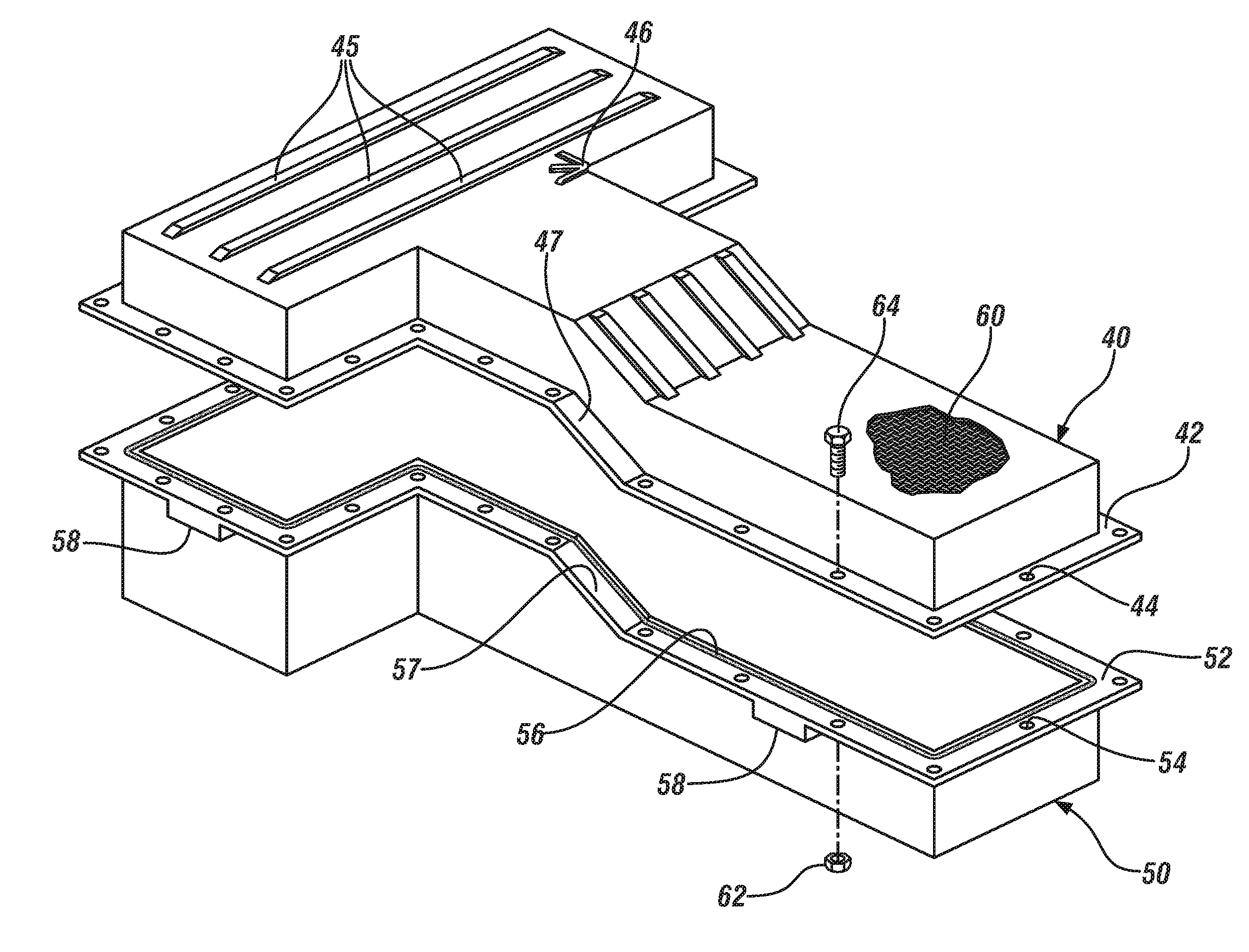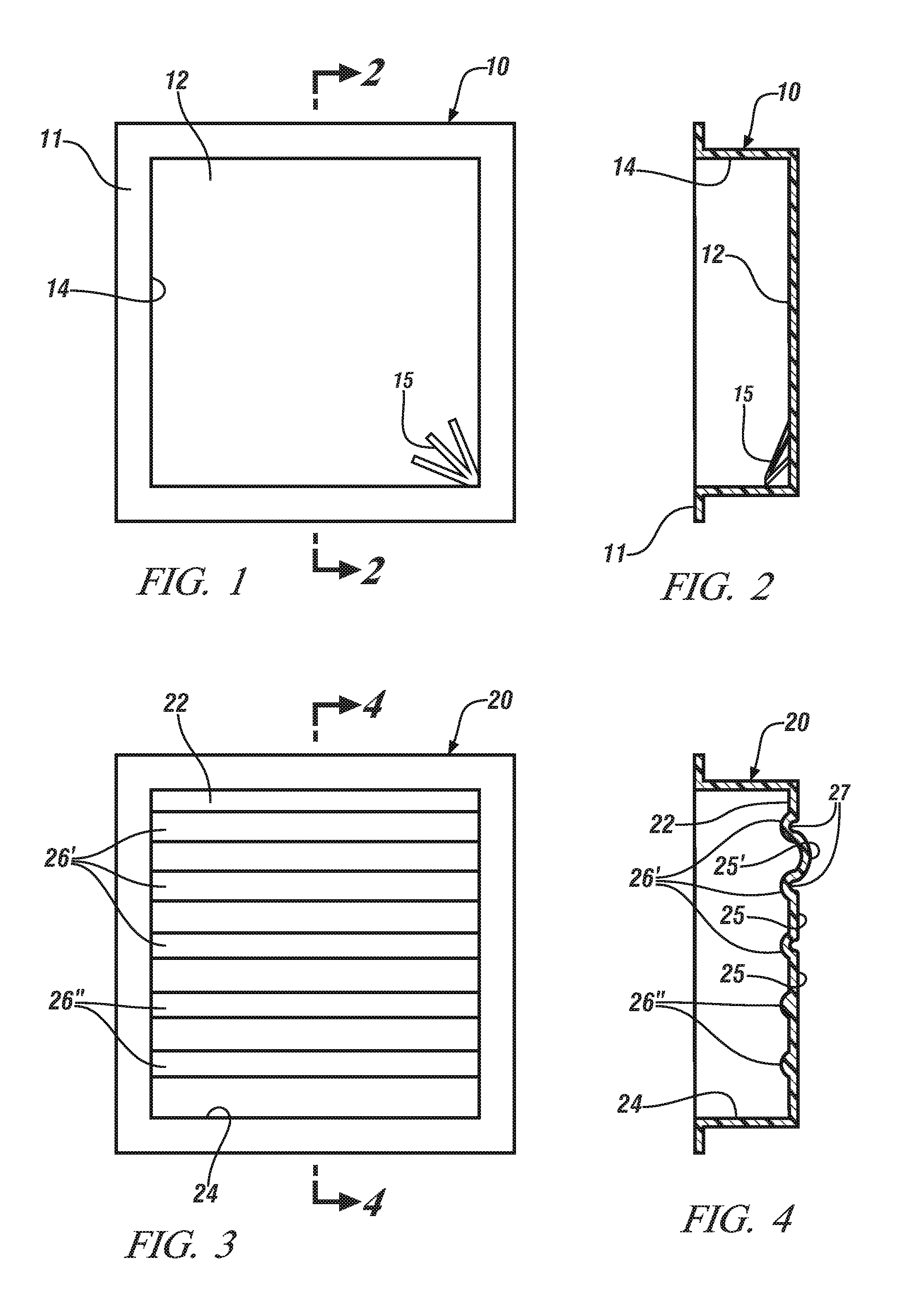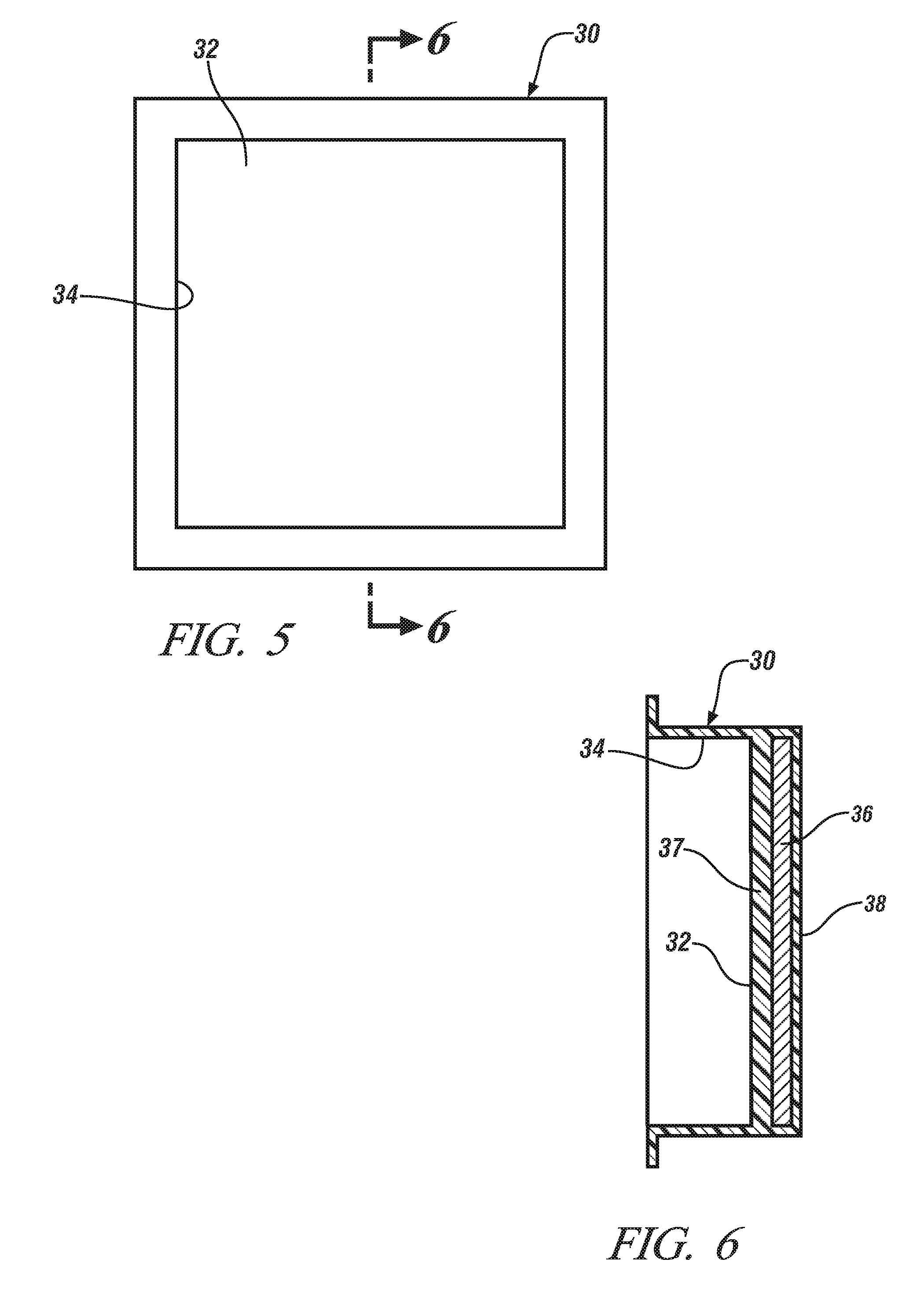Fabric composite support or enclosure for an automotive battery pack
- Summary
- Abstract
- Description
- Claims
- Application Information
AI Technical Summary
Benefits of technology
Problems solved by technology
Method used
Image
Examples
Embodiment Construction
[0025]The following description of the embodiment(s) is merely exemplary in nature and is not intended to limit the invention, its application, or uses.
[0026]Vehicles propelled by electric motors are becoming more widespread as more manufacturers supplement their product lines with hybrid or all-electric vehicles. Such vehicles incorporate a high voltage battery or battery pack as an energy storage device, the battery being suitably sized to provide capability for all-electric vehicle operation over some predetermined range.
[0027]These battery packs may range in weight from about 30 Kg to about 200 Kg and, when installed in a vehicle, are typically located in an enclosure. The enclosure is generally fabricated as two parts, a support structure, resembling a tray, with cavity geometry complementary to the exterior geometry of the battery pack, and a cover, which when joined to the support structure completes the enclosure. The interior cavity walls of at least the support, and, prefe...
PUM
 Login to View More
Login to View More Abstract
Description
Claims
Application Information
 Login to View More
Login to View More - R&D
- Intellectual Property
- Life Sciences
- Materials
- Tech Scout
- Unparalleled Data Quality
- Higher Quality Content
- 60% Fewer Hallucinations
Browse by: Latest US Patents, China's latest patents, Technical Efficacy Thesaurus, Application Domain, Technology Topic, Popular Technical Reports.
© 2025 PatSnap. All rights reserved.Legal|Privacy policy|Modern Slavery Act Transparency Statement|Sitemap|About US| Contact US: help@patsnap.com



